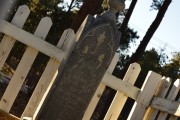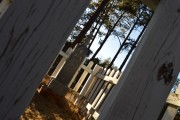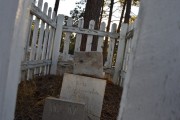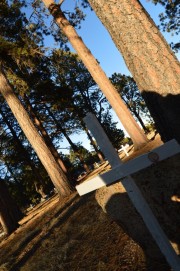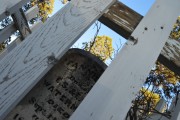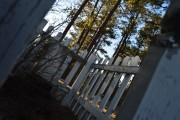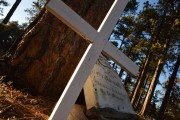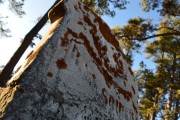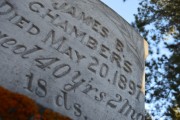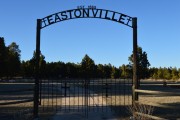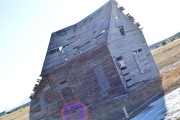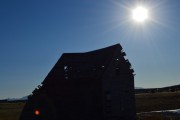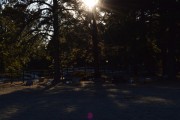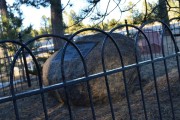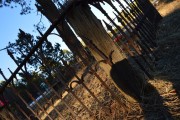Eastonville was a town in Colorado near Black Forest that was established around 1880. It was named after a pioneer, John Easton. The area was noted to be great for potato farming, and was the self-proclaimed “Potato Capital of the World”. It was one of the many stops on the railroad, laid by Denver and New Orleans Railroad. The original stop, however, was called McConnelsville and was a couple miles away from the actual location of Eastonville. Eastonville had so many jobs and not enough workers that large ads used to be printed in the Colorado Springs Gazette boasting high pay and good work. By the 1900’s, the town had three churches, a school house, three hotels, a race track, and several businesses, as well as 350-500 residents. The town thrived until 1930, when drought and depression hit. All that remains today are a few scattered structures, and the cemetery which is still in use today.
My visit to Eastonville yielded discovery of the most known still-standing structure of the old town. It was an old house, right on the edge of the road, and while I couldn’t get close to it (as it’s on private property and a no trespassing sign is posted) I could feel the echoes of the past still resonating through the dilapidated, leaning structure. In the cemetery, there were several headstones worn far too much to be read, by weather and age. There were other headstones that were readable, dated in the early 1880’s. It was so incredibly peaceful to walk around the graves of these people that had lived over a hundred years before me. The peculiar thing that I noted about the cemetery is that, because it is still in use, there is a strange layout of very old graves next to very recent graves. It made for a very strange sense of stepping through time as I traversed the landscape. There were several graves that were not marked at all by headstones, but merely white, wooden crosses, or large rocks with no carvings on them. These made me feel sad, as there was no way to know who I was paying my respects to. I really enjoyed seeing this strange collection of graves and dates.
